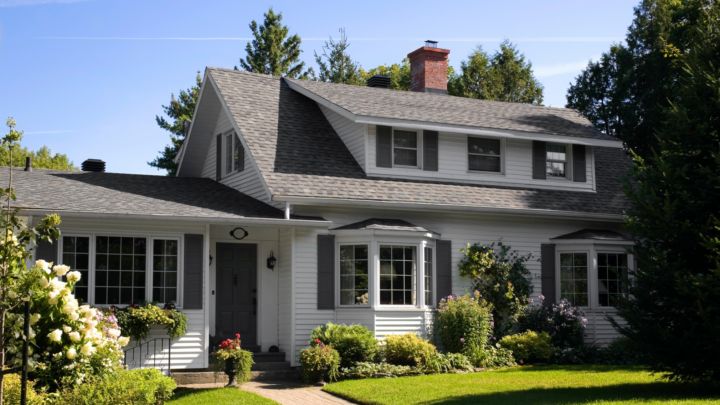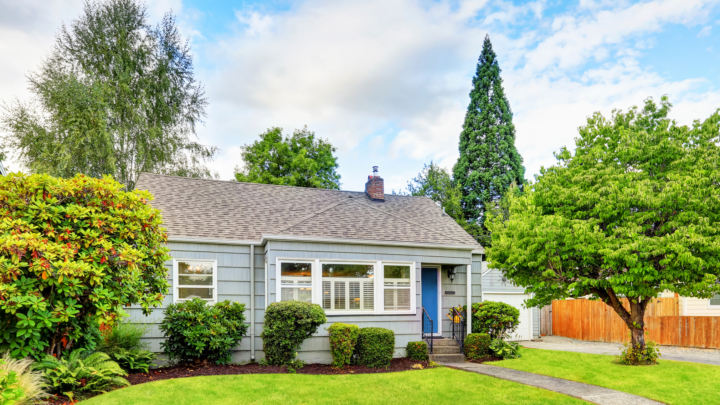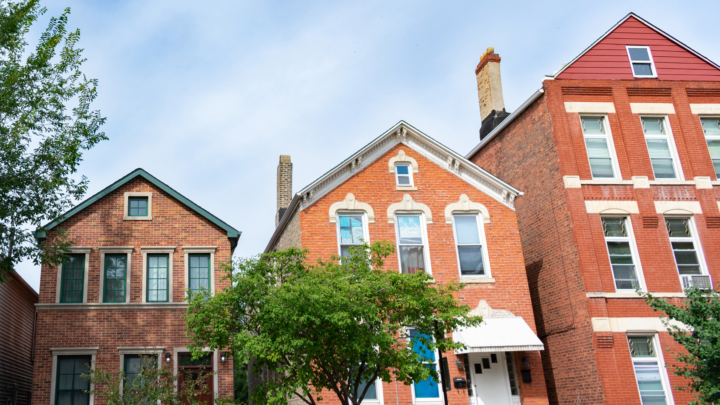FHA Loans: A Comprehensive Guide to Federal Housing Administration Loans
An FHA loan is a mortgage loan that is insured by the Federal Housing Administration (FHA). See the advantages and disadvantages, and if this loan type makes sense for you.

Federal Housing Administration loans, more commonly known as FHA loans, are a popular choice for many home buyers, especially those who may be purchasing a home for the first time. Here’s what you need to know.
What Is an FHA Loan?
An FHA loan is a type of mortgage that is popular with first-time buyers. FHA loans are government-backed and insured by the Federal Housing Administration. Because the program protects the lender if borrowers default on the loan, qualification criteria like credit score and down payment are lower than other loan types such as a conventional loan.
Pros and cons of FHA loans
A mortgage is a big commitment that can affect your finances for up to 30 years (depending on your mortgage loan term, e.g., 15, 20, or 30 years), so it’s important to do your due diligence. Here are some of the most important pros and cons of FHA loans.
Benefits of FHA loans
Low credit score requirements: You may be able to qualify for an FHA loan with a credit score as low as 500. However, most lenders require a minimum score of 580, which is still lower than the conventional loan minimum of 620. The higher your credit score, the more favorable your loan terms will likely be.
Low down payment requirements: A 20% down payment is considered ideal for most types of loans, but FHA loans are available with down payments as low as 3.5% of the purchase price.
Competitive interest rates: Interest rates on FHA loans are comparable to conventional loans, but rates are sometimes lower for FHA loans since they have a lower base interest rate. This is because the government backing makes FHA loans lower risk to lenders. But the interest rate you’re offered is based on your full financial profile and mortgage insurance.
No prepayment penalty: FHA loans can be paid off at any time, including for reasons like refinancing and selling the home.
Down payment assistance: There are a wide range of down payment assistance programs that can be applied to FHA loans.
Disadvantages of FHA loans
Mortgage insurance premiums (MIP): All FHA loans require homeowners to carry mortgage insurance in case they default on their loan. This includes both an upfront, one-time premium at closing, as well as ongoing monthly premiums paid alongside your monthly mortgage payment. Buyers who put down at least 10% of the purchase price must pay MIP for 11 years, after which time the payment is removed. Buyers with lower down payments must pay MIP for the duration of the loan.
Limited loan amounts: There are limits to how much you can borrow with an FHA loan. The amount varies by location, based on the cost of living in that location, and is updated yearly. You can check the loan limit in your area on the Department of Housing and Urban Development (HUD) website.
Property requirements: The Federal Housing Administration wants to ensure the home you’re seeking to buy is safe to live in, so there are certain criteria the home must meet. Homes in need of significant repair, including issues like damaged foundations, exposed electrical systems, lead paint, and inadequate ventilation won’t qualify for an FHA loan.
How FHA loans work
Once you’ve found a house and made an offer, you’ll start making some financing decisions with your lender. Here is how the process works if you’ve chosen to buy your home with an FHA loan.
Loan length
The repayment period of your loan is called a term. The most common term for an FHA loan is 30 years. A 15-year term is also available. 10- and 20-year loans may be offered too, so discuss your options with your lender. If you don’t have a lender yet, start by pre-qualifying with Zillow Home Loans; it only takes a few minutes and won’t impact your credit score.
Interest rate
Most FHA loans are offered with fixed interest rates, although adjustable-rate mortgages may also be available. With a fixed-rate mortgage, your interest rate will stay the same for the entire term. An adjustable-rate mortgage (ARM) offers a low initial rate, which then fluctuates based on the details of the loan and market conditions. The option you select is typically based on the length of time you plan to stay in the home.
Down payment amount
You’ll also need to decide how much money you’ll put down on the home. 20% is ideal, but FHA loans are available with down payments as low as 3.5%, as long as you have a credit score of 580 or higher. If your score is between 500 and 579, you’ll need to put down at least 10%. Some people source their down payment with gift money from a family member or friend. FHA loans allow 100% of your down payment to come from a gift. With a down payment of more than 10%, your mortgage insurance will roll off your loan after 11 years.
FHA mortgage insurance
Before getting an FHA loan, it’s important to understand FHA mortgage insurance, which protects your lender in case you stop making payments on your house. On FHA loans, your mortgage insurance premiums (MIP) last the entire length of the loan if your down payment is less than 10% of the home’s purchase price. If you put down at least 10%, your monthly MIP fees will stop after 11 years of payment.
| Loan term | Original down payment | Mortgage insurance duration |
|---|---|---|
| 15 years or less | less than 10% | Life of loan |
| 15 years or less | 10% or higher | 11 years |
| Over 15 years | less than 10% | Life of loan |
| Over 15 years | 10% or higher | 11 years |
Alternatively, you can explore refinancing into a new loan with 20% down, and no mortgage insurance, when your financial situation changes or when you’ve earned 20% equity in the property. When you refinance, the loan will be based on your home’s updated value, which should appreciate each year. Keep in mind, you may meet that 20% equity threshold sooner than your amortized payment schedule suggests because any increase in home value adds to your equity. Even if you purchase a home with 3.5% down, you could be eligible to refinance into a conventional loan, with no mortgage insurance, in just a few years.
NOTE: FHA MIP is often confused with private mortgage insurance (PMI). PMI is a similar mortgage insurance product, but for borrowers of conventional loans who put down less than 20%.
Your FHA mortgage insurance will be broken into two separate premiums.
Upfront MIP (UFMIP)
This is a one-time premium payment of 1.75% of the FHA loan amount, paid at closing.
Annual MIP
Your annual premium totals 0.5% to 0.75%% of the loan amount on 30- year loans and 0.15% to 0.65% on 15-year loans. That amount is then divided into 12 monthly payments, with your premium payable alongside your monthly principal and interest payment.
NOTE: The federal government updates MIP percentages annually, so before closing, be sure to confirm with your lender the cost of your annual MIP. This charge will be detailed during underwriting and again at closing.
Your specific rate varies based on how much you’re borrowing and the size of your down payment. For example, on a 30-year loan where you borrow less than $766,550 and have a down payment of 10% of the sale price, your annual MIP premium will be 0.5% of the purchase price. You would pay a twelfth of that amount with your mortgage payment each month. However, if your down payment is less than 5%, you’ll pay a slightly higher rate, 0.55% per year.
Annual MIP is a bit lower on 15-year loans, because they’re less risky for the lender. Using the same scenario above with a loan amount of less than $766,550 and a down payment of 10%, but over a shorter loan term of 15 years, your annual MIP rate will be 0.15% of the sale price. Again, you’ll pay this in 12 installments, along with your monthly mortgage payment.
In March of 2023, in reaction to rising mortgage rates, the government lowered the rate for annual MIP by 30 basis points for most FHA home buyers (reflected in premiums above), effectively making homeownership a bit more affordable. For the average FHA borrower, this change saves you $800-$1,400 in the first year of homeownership (based on the median home value of one-unit single family homes).
FHA loan closing costs
Other budgeting challenges you’ll need to prepare for with any loan are closing costs. Closing costs are the out-of-pocket expenses you must pay in order to finalize your loan. They include things like lender fees, appraisal, title services and documentation costs. Buyer closing costs are usually between 2% and 5% of the home’s purchase price and must be paid at closing, which may limit your available cash for other upfront charges like the upfront mortgage insurance premium (UFMIP). Most FHA loans follow a qualified mortgage cap that limits the total cost of upfront points and fees due at closing, like lender origination fees. In most cases, where home purchases are $100,000 or more, the qualified mortgage fees cannot exceed 3% of the loan amount. But again, this cap does not apply to the full list of closing costs.
FHA guidelines also allow sellers to cover some of the buyer’s closing costs, up to 6% of the purchase price (effectively all closing costs). Of course, this would have to be part of your negotiations with the seller when you make your offer.
Here’s an example. If you buy a $300,000 home with an FHA loan and a down payment of $10,500 (3.5% of the purchase price), you’d borrow $289,500. You might pay between $6,000 and $15,000 in closing costs (2%-5% of the purchase price). FHA requirements mean your lender can’t charge more than $15,000, and it’s possible to negotiate with the seller to deduct all $15,000 from their proceeds at closing, instead of paying them yourself.
How to get an FHA loan
The process of getting an FHA loan is similar to getting a conventional loan. You’ll need to go through the formal application process and provide information and documentation about your income, employment and credit history. You’ll also need to submit information about the home you’re buying. Once your application is complete, your lender will review it and determine if you meet the requirements for an FHA loan. If you do, your loan will be approved, you’ll sign the loan documents, pay closing costs and get the keys to your new home.
FHA loan requirements
FHA loans have a set of requirements you must meet in order to qualify for an FHA loan. These include:
- The home must be your primary residence.
- You must have a minimum credit score of 500 (though most lenders require 580+).
- You’ll need a down payment of at least 3.5% with a credit score of 580 or higher, or at least 10% if your score is lower than 580.
- You must provide proof of steady employment and income.
- You’ll need a debt-to-income ratio of less than 43%
- You must pay MIP upfront and annually
FHA max loan amount
Loan limits refer to the maximum loan amount you can borrow for any given loan type or loan program. FHA loan limits are lower than conventional loan limits, meaning your home buying budget might be lower when using an FHA loan to buy a house. Each year, the FHA sets new limits on how much you can borrow, based on housing costs in your region.
| 2024 FHA loan limits | Low-cost areas | High-cost areas |
|---|---|---|
| One-unit property | $498,257 | $1,149,825 |
| Two-unit property | $637,950 | $1,472,250 |
| Three-unit property | $771,125 | $1,779,525 |
| Four-unit property | $958,350 | $2,211,600 |
Use the table above for general limits or visit the HUD website to find the specific limit for your area. Keep in mind that there are special, higher limits for Hawaii, Guam and the Virgin Islands where construction costs are even higher. In these places, the one-unit limit is $1,724,725 in 2024.
How long does it take to get an FHA loan?
30-45 days is the standard length of time between your offer being accepted and the closing date. This is the same timeframe as a conventional loan. There is more paperwork on an FHA loan which can cause the loan application or final signing to take a few minutes longer than conventional. And regardless of loan type, if your financial history is complicated or if you’re slow to respond when your lender asks for more information, then loan processing will lean closer to 45 days.
Types of FHA Loans
Not all FHA loans are the same and not all lenders offer all types of FHA loans. There are a few different options to consider. Talk with your lender to determine the right choice for you.
Traditional FHA loan
A traditional FHA loan is a mortgage for your primary residence. The home you buy must meet FHA safety requirements and loan limits.
FHA energy efficient mortgage
An energy-efficient mortgage (EEM) is for buyers who want to buy an energy-efficient home or make efficiency improvements to a home they already own or are purchasing. This loan complements your FHA loan, allowing you to borrow funds to make these upgrades. The loan limits are either 5% of the purchase price (not to exceed $8,000) or $4,000, whichever is greater based on the value of the property.
FHA 203(b) loans
FHA 203(b) loans allow you to buy a home that needs some repair work done. This loan type, the most popular of all FHA loans, allows you to borrow up to 96.5% of the purchase price of the home, including the cost of improvements.
FHA 203(k) loans
This loan type is similar to a 203(b) loan, but it’s intended for buying homes that require significant renovations. With a 203(k) loan, you can borrow the full cost of a fixer-upper, plus the cost of the renovations, up to the FHA loan limit. This loan type can be harder to acquire since not all lenders offer FHA 203(k) loans.
Section 245(a)
A section 245(a) is a type of graduated-payment mortgage (GPM) that has a low initial monthly payment that increases over time. This loan type is designed for people who may have limited monthly cash flow now, but whose earnings will likely increase over time. Another option is a growing equity mortgage (GEM), which uses scheduled increases in monthly payments to shorten the loan term over time.
FHA title I loans
This program helps low- and moderate-income borrowers who may have limited home equity pay for significant home repairs. This includes things like plumbing, electrical and other improvements that increase the livability of a home they already own.
Home equity conversion mortgage
A home equity conversion mortgage is a popular reverse mortgage designed to allow older homeowners to withdraw a portion of their home's equity without selling. Under this program, homeowners aged 62 and older who own their house outright and have significant equity, can make monthly withdrawals on their home’s equity.
FHA refinance
As the name implies, an FHA refinance is an option for existing homeowners to refinance their current mortgage into an option with a lower rate or better terms. This can be a smart strategy if interest rates drop and you could save significantly over time. It’s important to know that upfront MIP is required with a refinance, but it’s 1% of the loan amount instead of 1.75%. There are more refinance options with FHA than with conventional loans, so be sure to ask your lender for help navigating your options.
Streamline FHA refinance
A streamline FHA refinance is another refinancing option that allows homeowners to get a new loan with a better rate or term. It gets its name because it’s the simplest way to do an FHA refinance. You won’t have to verify your income or assets, so the process is faster. You may either qualify for an FHA streamline with appraisal or an FHA streamline without an appraisal.
Need an FHA loan? Find a local lender on Zillow who can help.
Written by
David Weidner
05.12.2017
How much home can you afford?
At Zillow Home Loans, we can pre-qualify you in as little as 3 minutes, with no impact to your credit score.
Zillow Home Loans, NMLS # 10287. Equal Housing Lender
Get pre-qualified


